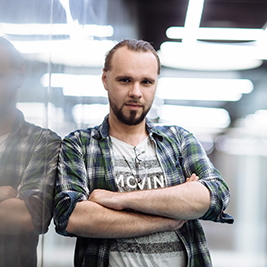Bank of Portraits / Kosoburov Petro and Olena

Kosoburov Petro and Olena
Petro and Olena Kosoburovs lived in the Kulchyn village not far from Lutsk city. The war and occupation brought grief into their family. Both their sons were deported to Germany as forced laborers and died there. Only their daughter Maria remained with parents.
Despite the poverty, Petro and Olena could not refuse to help the unknown girl, who knocked on their door at the end of 1942. An unexpected guest was 15 years old. Her name was Brakha Goldkhaber. She was a Jewish, one among very few, who was able to escape from the Volodymyr-Volynskyi ghetto before the mass murder of Jews there.
Before the war, the Jewish community of Volodymyr-Volynskyi city reached the point of 40% of the total city population. The Jews made their living of the petty trading and the artisanship, mostly of the skin processing. Traditional Jewish religious and educational institutions functioned there. Among them was also a big Choral Synagogue. It is believed that it was established in 1801. It survived the war but was deconstructed by Soviet authorities in the 1950s.
Since XVIII century Volodymyr-Volynskyi was one of the Ukrainian centers of Jewish religious doctrine, known as Hasidism. This history was almost ended during the beginning of the German-Soviet war. The city had been occupied by German troops by June 23, 1941. During the next weeks, the occupants started the preparation to the further imprisoning and extermination of the local Jews. The “Judenrat” was established. It was a Jewish council, which supposed to be an intermediate body between the occupational government and the Jewish community. The pogroms started in the city. The bitter irony was that the peak period of the pogroms was coincident with October 1, 1941, when all the Jews had to celebrate the Yom Kippur. About 2000 o Jews became victims of that pogroms.
In the middle of April 1942, the ghetto was established in Volodymyr-Volynskyi. The total number of its prisoners estimated at 18000 persons. The ghetto was separated from the rest of the city by fences with barbed wire. Local Auxiliary Police guarded it on the outer side. Behind the barbed wire, the Jewish police supported the order. Besides the separation from the outer world, the Jewish community itself was divided inside the ghetto. The qualified workers or those whom the occupational rulers considered useful lived separately from the others.

The first mass massacre of the ghetto prisoners was conducted in September 1942. The Germans took out of the ghetto about 14-15 thousand Jews and shot dead them in a location near the Piatydni village.
The Nazis killed the rest of the prisoners in October-December 1942. Only a few of them were lucky enough to escape from the ghetto. Brakha Goldkhaber was one of those who managed to survive.
Petro and Olena took the escapee with compassion and understanding. They decided to harbor her. The girl had no constant shelter at the house of Kosoburovs. She was hiding on the attic, or at the granary. From time to time, she was hiding at Kosoburovs` daughter Maria's bed or even under it. The last two hiding places were especially useful in case of the unexpected coming of strangers.
Being recovered after the horror she came through, Brakha decided not to endanger her rescuers. She left the family of Kosoburovs and made her living of the different jobs for some time. Olena and Petro however were ready to harbor her again at any time. Brakha, in her turn more than once sought their assistance.
After the expulsion of the Nazi invaders in July 1944, Brakha left Ukraine. Eventually, she moved to Israel where resumed the communication with the Kosoburovs` daughter Maria and her family.
On November 27, 1997, Olena and Petro Kosoburovs were awarded the honorable status of the Righteous Among the Nations.

Maksym Milevskiy
Kyiv
National museum of the History of Ukraine in the Second World War
-
fingerprintArtefacts
-
theatersVideo
-
subjectLibrary

